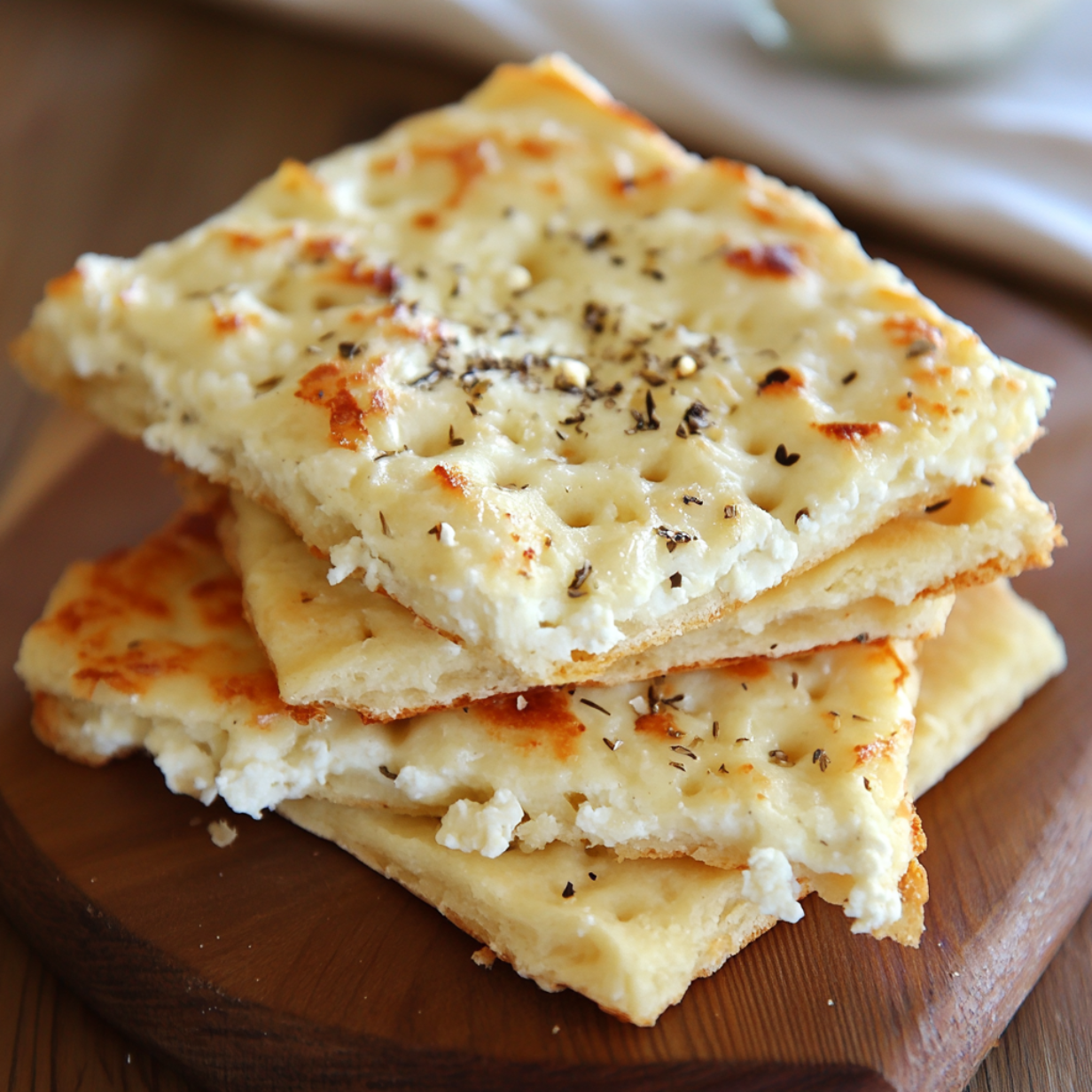Flatbread is a versatile and beloved food, but sogginess can ruin the experience. If you’ve ever asked yourself, “Why is my cottage cheese flatbread soggy?”—you’re not alone. From overly wet dough to incorrect cooking techniques, there are plenty of reasons why your flatbread might turn out less than perfect. In this article, we’ll explore common mistakes, effective solutions, and practical tips to prevent sogginess in the future. Let’s dive into the details so you can enjoy flatbread that’s crispy on the outside and soft on the inside.
Table of contents
Common Causes of Soggy Cottage Cheese Flatbread
Why Does Cottage Cheese Make Flatbread Soggy?
The primary culprit behind soggy flatbread is excessive moisture. When the dough contains too much water or the cooking environment is overly humid, the result is a floppy, damp texture instead of the desired crispness. Moisture retention can also be caused by toppings or fillings, especially when using high-moisture ingredients like cottage cheese.

Cottage cheese, while creamy and flavorful, is naturally high in water content. If it’s not drained or prepared correctly, it releases water during cooking, soaking into the dough. This problem is compounded by poor heat distribution or insufficient cooking temperatures.
The Role of Dough Consistency in Flatbread Texture
Cottage cheese is a star ingredient in many flatbread recipes, offering a tangy flavor and a creamy texture. However, its high moisture content can be tricky to manage. If it’s not blended with the right ingredients or spread thinly enough, it can overwhelm the dough. Choosing low-moisture alternatives or balancing it with dry ingredients is key to avoiding sogginess.
Cooking Environment and How It Affects Sogginess
Sometimes, the problem isn’t the recipe itself but how you execute it. Even a well-written recipe can produce soggy flatbread if you skip crucial steps. For instance, failing to preheat your oven or skillet, using the wrong cookware, or undercooking can lead to soggy results. Techniques like pressing excess water out of the cheese and evenly rolling the dough are small but significant steps in ensuring success.
For more ideas on baking techniques, visit Cottage Cheese Flatbread
Mistakes That Make Cottage Cheese Flatbread Soggy
Is Your Dough Too Wet? Fixing Overhydration Issues
One of the biggest reasons people wonder, “Why is my cottage cheese flatbread soggy?” is overhydrated dough. Adding too much water to the dough, either by accident or from improperly measured ingredients, creates a sticky, unworkable mess. This extra moisture doesn’t evaporate during cooking, leaving the flatbread wet and dense.

To prevent this, always follow your recipe’s measurements closely. If the dough feels too sticky, add small amounts of flour to balance it out. Keep in mind that ingredients like cottage cheese already contribute moisture, so your dough should start with a slightly drier consistency.
Are You Using Too Much Cottage Cheese?
Even if your dough seems fine initially, an imbalance between wet and dry ingredients can create problems as you cook. Cottage cheese, a key player in the recipe, often contains hidden moisture that seeps out when heated. If you haven’t adjusted the flour or other dry components accordingly, the dough can’t absorb the excess liquid, leading to sogginess.
To fix this, use low-moisture cottage cheese or strain it through a fine mesh strainer before mixing. Adding ingredients like grated cheese, semolina, or extra flour can help soak up the excess water.
Temperature Mistakes That Lead to Soggy Flatbread
Cooking flatbread at the wrong temperature is another common mistake. Low heat prevents the outer layer from forming a crisp crust, which means the dough absorbs moisture instead of releasing it. When you’re aiming for a crispy result, high heat is your best friend.
Always preheat your oven or skillet to the recommended temperature before cooking. If you’re using a stovetop, ensure the pan is hot enough that a drop of water sizzles instantly. This ensures the flatbread cooks evenly and quickly, preventing sogginess.
Improper Preparation and Handling of Flatbread Dough
Finally, how you handle your dough can make or break your flatbread. Overkneading introduces too much air, while underkneading leaves the dough uneven and prone to uneven cooking. Adding toppings like cottage cheese too early or in large clumps also creates wet patches that never fully cook through.
To avoid this, spread cottage cheese thinly and evenly, leaving a border around the edges. Roll your dough uniformly and work quickly to keep it from absorbing excess moisture from the air.
Solutions to Prevent Soggy Cottage Cheese Flatbread
How to Fix Wet Dough for Cottage Cheese Flatbread
If you’re wondering, “Why is my cottage cheese flatbread soggy?”, the answer often lies in the ingredient ratios. Start by draining your cottage cheese thoroughly. Use a cheesecloth or strainer to remove excess water before mixing it into your dough. Combine this with extra flour or dry ingredients to balance the texture.

When mixing the dough, aim for a consistency that’s soft but not sticky. If it clings to your hands or the bowl, add a tablespoon of flour at a time until it firms up. This small adjustment can make a big difference.
Adjusting Cooking Techniques for Crisp Flatbread
Achieving the perfect texture comes down to how you cook your flatbread. High heat is essential, whether you’re baking, frying, or grilling. For oven baking, place the flatbread on a preheated baking stone or a heavy-duty baking sheet. This helps the bottom cook evenly and prevents it from soaking up too much moisture.
If you’re using a skillet, opt for cast iron or another heavy-bottomed pan. Lightly grease it to prevent sticking, but avoid adding too much oil, as this can make the flatbread greasy rather than crispy.
Should You Preheat? Temperature Tips for Flatbread
Preheating is one step you can’t skip. Flatbread requires an initial burst of heat to lock in moisture and develop a golden crust. Without it, you’re left with a soggy, limp result. Always allow your oven or pan to preheat fully—this means waiting at least 10 minutes after it reaches the desired temperature.
Using the right cookware also matters. Avoid thin, lightweight pans that don’t distribute heat evenly. A good skillet or baking stone retains heat better, ensuring a consistent cook.
Using Cottage Cheese Alternatives to Reduce Moisture
If you’ve tried everything and still find yourself asking, “Why is my cottage cheese flatbread soggy?”, consider experimenting with alternatives. Low-moisture ricotta or farmer’s cheese can be excellent substitutes. They deliver similar creaminess with less water content, reducing the risk of sogginess.
Alternatively, mix cottage cheese with other ingredients like grated Parmesan or bread crumbs to absorb excess moisture. This creates a drier mixture that still retains flavor.
Tips to Avoid Soggy Cottage Cheese Flatbread
The Best Ingredients for Crisp Cottage Cheese Flatbread
If you’re still asking yourself, “Why is my cottage cheese flatbread soggy?”, prevention is key. Start with high-quality ingredients. Opt for low-moisture cottage cheese or drain the regular kind thoroughly before use. A fine mesh strainer or cheesecloth works wonders here. Combine this with strong, all-purpose flour to give your dough more structure and reduce the risk of sogginess.
Using the right tools also makes a big difference. A preheated baking stone or a cast-iron skillet retains heat effectively, ensuring even cooking and preventing excess moisture from pooling at the bottom.
Mastering the Dough-Making Process
Your dough is the foundation of your flatbread, so getting it right is crucial. Mix the ingredients just enough to combine them—overworking can lead to flatbread that’s dense and prone to sogginess. Pay attention to texture: your dough should be slightly sticky but not wet.
Letting the dough rest before rolling it out helps gluten develop, giving the flatbread structure. Roll it evenly and thinly to ensure it cooks thoroughly without retaining too much moisture.
Key Cooking Tips to Prevent Sogginess
Timing and temperature are everything when it comes to flatbread. Always preheat your oven or pan, as starting with a cold surface traps moisture in the dough. Aim for high heat to create a quick, golden crust while keeping the inside tender.
Spread toppings, including cottage cheese, in a thin, even layer to avoid overloading the dough. Leave a small border around the edges to allow steam to escape, which prevents sogginess.
FAQs: Common Questions About Cottage Cheese Flatbread
Can You Use Low-Fat Cottage Cheese?
Yes, low-fat cottage cheese can be used, but it tends to have a higher water content. If you’re wondering, “Why is my cottage cheese flatbread soggy?”, this could be the reason. Strain low-fat varieties well to avoid adding too much moisture to your dough.
What Is the Best Flour to Use?
All-purpose flour is the most versatile choice, offering a balance of elasticity and strength. However, for crispier results, you can mix in some whole wheat or bread flour, which absorbs more moisture and adds a firmer texture.
Should You Pre-Bake the Dough Before Adding Toppings?
Pre-baking is an excellent way to avoid sogginess. A quick 3–5 minutes in the oven before adding toppings helps set the dough and creates a barrier that prevents moisture from seeping through.
How Do You Store Flatbread to Avoid Sogginess Later?
Store flatbread in an airtight container or wrap it in foil, but avoid refrigeration, which can make it soggy. If you need to reheat, use an oven or skillet to revive the crispness.

